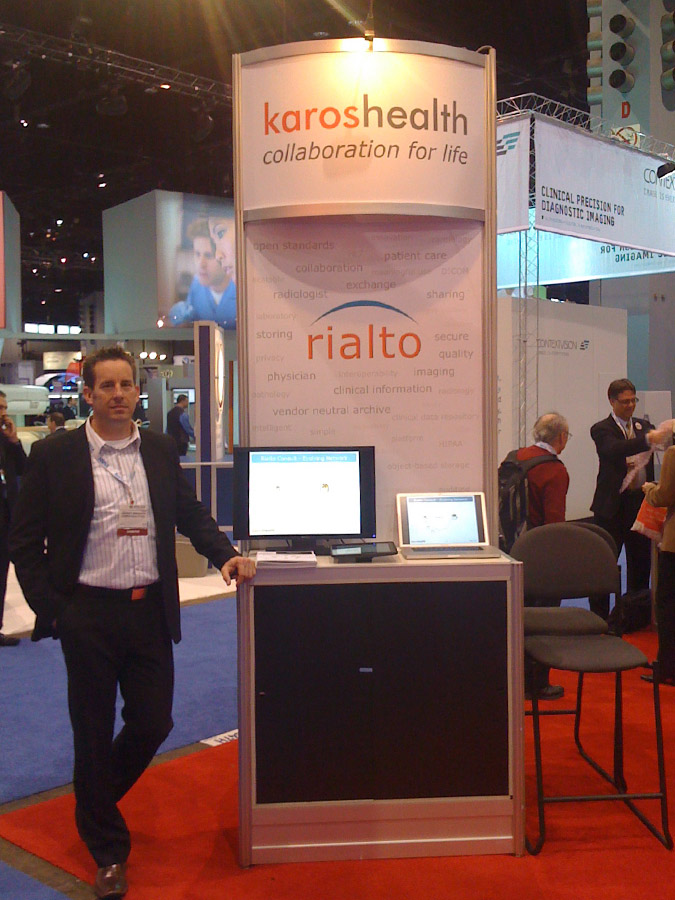
I recently spent a week in Chicago at the annual conference put on by the Radiological Society of North America. I was there along with Rick, Michel, and Jeff, three of my colleagues from Karos Health (that’s Jeff in the picture). While it was my first visit to this conference, the others had all made the trip multiple times over the years. We had a great strategy for getting the most out of our visit, and I thought I’d share it here.
We had a minimal presence on the show floor, with just a tiny display as part of a booth organized by the Government of Ontario’s Ministry of Economic Development and Trade. It was perfect for us, though, as our strategy revolved around pre-arranged meetings and visits to specific companies rather than simply waiting for visitors to find us. Our display served as a place where people could find us if needed, with someone always present and ready to talk about our products and demonstrate our latest product, Rialto Consult.
We were able to provide demonstrations for a range of visitors. Some were people my colleagues knew who wanted to see our new product, some were existing customers, and some were new contacts that we made at the show. All were attentive while we showed what Rialto Consult can do and positive in their feedback. In fact, we were a little taken aback at the reception; we were pleased with what we were showing, but the response was even more than we could have hoped for.
There were a couple of highlights for me. One was prompted by a data issue, in which a customer noted that a sample document was missing from what we showed. I was able to add the document that evening, and when the customer returned the next day with some colleagues, the presence of the document did not go unnoticed.
The second was a visit to our booth by a colleague from one of our Karos Innovation Centers, who arrived while a demonstration was in progress. After we completed the demonstration, our colleague was able to answer some questions from the small audience relating to our work together. The timing was perfect!
RSNA 2010 was a successful conference with much positive feedback and a great response to Rialto Consult. In fact, on our return to Waterloo Rick characterized it as perhaps the most satisfying RSNA conference that he had attended. We’ll be there again next year.
This post originally ran, in a slightly different form, on the Karos Health blog.


